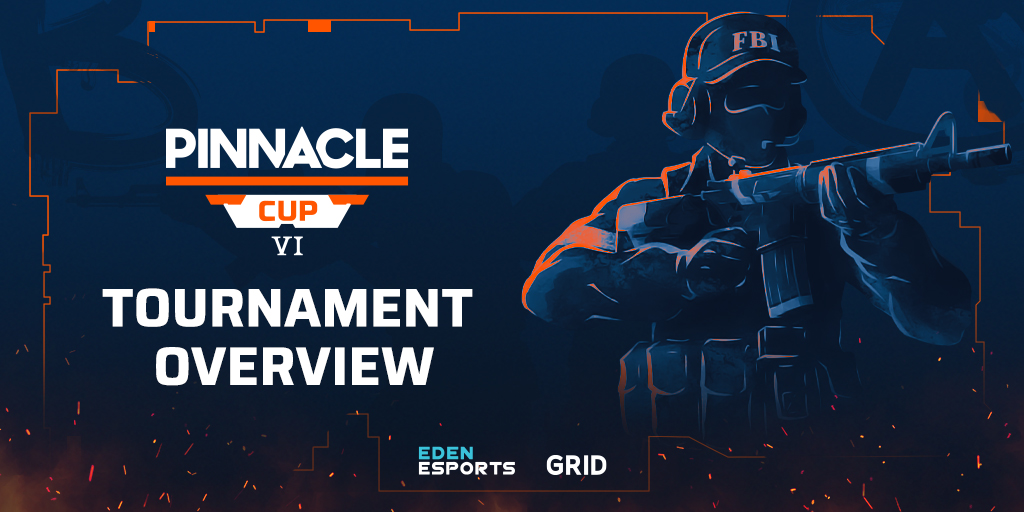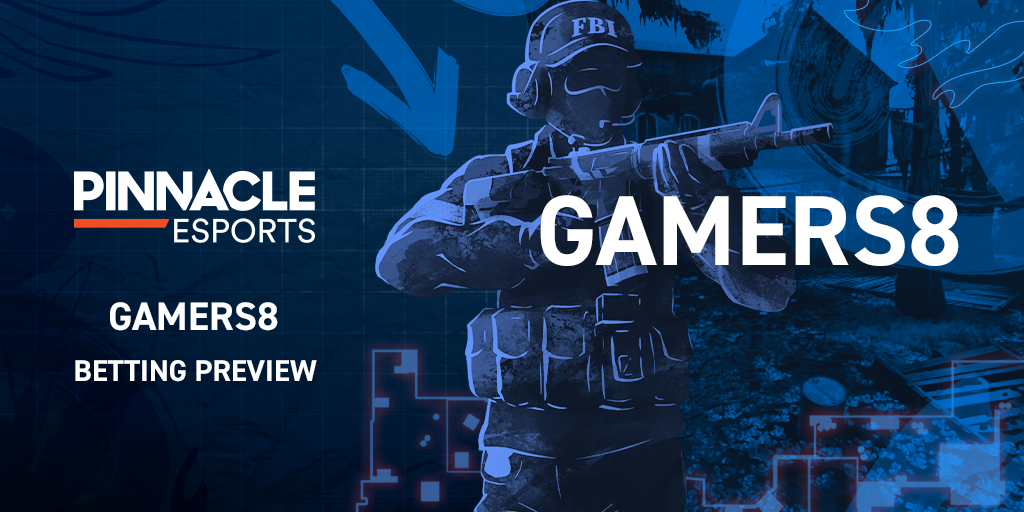A noted point of importance of a good betting strategy can be found in the economic bonus. This article will go beyond the pistol round and analyse the economic rules, how their latest update has influenced outcome, and finally how it may affect a betting strategy
In a prior piece we covered the importance of pistol rounds and how they may influence results, most especially on the less favoured side of maps where rounds are more difficult to attain; CT Dust, T Train were two mentioned. For an overview of what the economy is, please refer to our article on CS:GO's money system.
Start of half economy and forcebuys
If the pistol rounds are still of critical importance in today's game, you can imagine how vital they were in the prior iteration of the economy before the drastic change.
Prior to October 2018 the loser of the pistol round in both halves only gained a flat $1400 per player, not including any kill rewards during that round. The update moved it to $1900 (after the pistol only). This allowed teams to be able to pick up stronger second round buys despite losing. The $1900 allows teams to hold more than just pistols on their second round force. If a player gets two kills in the pistol round, SMG's and even a FAMAS might be found facing the Ts.
However it is much worse for the CTs if they allow the Terrorists some kills and the bomb to go down. The Ts will receive $1900, the bomb plant bonus ($250), plus kill rewards. This creates a situation where the Terrorist might actually have a 'better' buy. The value of their equipment won't necessarily be greater, however two AK47's and a few Deagles or Tec-9's would be favoured by a lot of pros in contrast to what the Counter-Terrorists are able to purchase if they take damage in the pistol.
Let’s use an example. The map is Dust2, the Terrorists have lost the pistol, getting three kills on one player, but without a bomb plant. The CT kill distribution has three to one surviving player and two kills by one player, who died. In the next round the Counter-Terrorists hold between $4300 and $3350. The Terrorists have $2000 on four players and $2900 on the player that secured the kills. The CT's purchase one M4 and four SMG's in order to have helmets, a kit and standard grenades. The Terrorists purchase three Deagles, one Galil and one Scout, with two smokes and a flashbang.
The total value discrepancy is about $7500, however the differential in the weapon value is much closer, approximately $2500. This is not undervaluing the importance of grenades, however when you factor in the range distances of Dust2, would you rather hold an MP9 in your hand or a Deagle. So imagine the CTs then decide to put their one rifle onto the B-site which holds a series of close range engagements, and their three MP9's on A.
Now to look at the data before and after both updates. A 400 day sample of all teams at all levels who played at least 100 maps at LAN tournaments were included in both. It is either a myth, or was commented on by a CS expert in the lore of the professional scene, that Valve wants all their weapons to be viable in competitive CS, with pistol and forcebuys to win approximately 33% of the time.
In the sample which came after the changes, 2416 maps were played by 17 teams, and the team that lost the pistol round won the second round 545 times, 22%. The average among the teams was also 22%. Six teams were at 20% or lower - NiP, Vitality, G2, Furia, Ence, and North, while six teams held 25% or greater - Faze, Astralis, Liquid, Natus Vincere, MIBR, and Mousesports, who broke opponents in an impressive 39% of rounds, while still winning 75% of their pistol conversions. There was a 32% difference between the best round-two forcebuy team win and the worst.
For the sample before the changes were made, 2455 maps played by 18 teams, and the second round forcebuy was won 480 times,19% of rounds played, as well as a 21% average among teams. Only four teams were above 25% - Astralis, Fnatic, Cloud9 and Hellraisers. On the flip side, five teams in the field were below 20% - Space Soldiers, Tyloo, Virtus Pro, North, and Renegades.
Round loss bonus
Under the prior monetary system a team would always receive $1400/player in their first losing round after winning a round. Valve changed this drastically providing some security in circumstances where teams had lost consecutive rounds, won one, and then proceeded to lose again. What this has done is ensure teams which are already struggling in one half to continue to have purchases, whether full or partial, without giving the team leading too many free rounds due to a double eco.
For betting, you should be conscious of the economy at all stages of the game. Even in games which go to overtime.
The situation it was meant most critically to protect is something along the lines of; Terrorists lose five in a row, score is now 7-2 for CTs. Ts win one round in a 1v1 scenario, then proceed to lose the following round with the score now 8-3, and they each only have $1400-2000/player. This would be a 'double save' scenario as even if they eco to go down 9-3 they will at most have $3300-$3900 per player in round 13. Therefore the CTs will get an additional round if they win at 9-3 putting them up 10-3.
Under the new economy, at 7-2 the T's would receive $3400 for five straight losses, however after losing the first round after winning one, their loss bonus would now be $2900 instead resetting to $1400. Even if they kept just one player alive in their third round win they would only have to save or half-buy in one round. Additionally if they planted the bomb they might not have to save at all when including a couple kills. In this system the losing team can continue to put pressure on the winning team.
The double eco/save has not been entirely removed. In the prior example let us say that the CTs, having won five in a row to 7-2, only kept 1-2 players alive for all of those rounds. They will not have a bank, meaning that the Terrorists need only to win one round to put them on a half-buy/force. Sometime this purchase can be as terrible as some pistols, and sometimes there may be a couple of SMGs, a hero AWP, and two FAMAS.
However keeping the CT money low and then moving from 7-2 to 7-4 will result in a full save. The difference in the new system is that it’s meant to bring the losing team back into the game. We will of course still see blowouts, however they should be less frequent between comparable teams. Let us look the four most recent majors, two before the changes and two after.
For example, Team A, starting CT-side Overpass, won 10 consecutive rounds to begin with a 10-0 lead. Due to bomb plants and kills Team B was able to break the CT economy after winning just two rounds because they had left Team A with only a couple of players alive for consecutive rounds. While the game did not end in close fashion, their ability to make rounds tight did offer times where they had a significant weapon advantage to eventually win a couple rounds. In a half that could’ve been a 13-2, ended 12-3.
Competitiveness at Majors
Valve only tends to step foot into the CS:GO professional scene in regards to the Majors, so I examined how their economy alterations affected the most prestigious tournaments. At the final two majors prior to both patches, ELEAGUE 2018 and FACEIT London 2018, 42% of maps ended within 6.5 rounds. Additionally 18% of maps went 30 rounds or more. However 28% were a complete blowout arriving with at least a 10 round disparity between the two teams.
It is a bit tricky here as the Katowice Major fell between the two updates. It includes the starting loss counter at $1900 for each half, however the reset remained. Nevertheless, even with the starting loss bonus beginning only at $1900, its effects were felt. Where 5-0 leads were far too common prior when a team simply won the pistol, and the losing team would have little to no chance to have a full-buy, with an AWP and full utility, before round five. At the Katowice and Berlin 2019 Majors an incredible 54% of matches went over 25.5 rounds. Additionally 22% of games saw at least 30 rounds. There was also a significant reduction in blowouts down to 21%.
Impact on map balance
Analysing the two samples above, the economic changes for those periods have not seemed to offer a significant change with any discernible pattern or significance. This does not mean it has not happened, however I had theorized that changes to the maps and weapons would offer something a little more noticeable. I only looked at five maps; Inferno, Mirage, Nuke, Overpass, and Train as the sample was not large enough for Cache, Dust2, Cobblestone, or Vertigo. The biggest swing between the two was 0.8% drop in Nuke's CT win percentage.
My thought was that the new rules would make every map marginally more T-sided, but we have not seen it thus far. The natural assumption is that reduction in resets benefits the CT economy equally. I do think it is worth monitoring as the meta of this still young economy evolves.
Effects on betting
My personal thoughts on the economy changes is that it was needed. CS:GO can already be one of the most rapidly shifting esports as a spectator, so why not offer teams the ability to have the most full-buys possible. Reducing the effects of the RNG'ish aspects should contribute towards ensuring the better performing team wins the map more often without their economy having as much of an impact.
It is much worse for the CTs if they allow the Terrorists some kills and the bomb to go down, with a situation where the Terrorist might actually have a 'better' buy.
In a way it does seem harsh to the team leading, however I think far more professionals would rather not be reset at 14-14 and be forced to double eco. If a team wins five rounds in a row, they should pretty consistently do so in a manner which prevents a $1400 game-deciding reset. The changes allow teams to determine their own fate near the finish line, while also reducing the number of blowouts between comparable teams.
In terms of using it for betting, you should be conscious of the economy at all stages of the game. Even in games which go to overtime, is it because they were playing MR3 10K and one team finally went 2-0 instead of 2-1 leaving the losing team with a weak buy on the third round?
Did one team lose because they had no money to buy a kit in the final round of regulation? Did one team win both pistols, but lose both round two conversions thereby putting themselves in a situation akin to the old rules? The economy is, and will always be, the critical difference between CS and most other FPS titles, so knowing which games were affected more as a result is still important even with the changes.
In a live betting context the economy definitely cannot be ignored. Sportsbooks offer both live moneylines and spreads, but determining what a good in-play wager is depends as much on the economy in both halves as it does on the teams’ strengths or weaknesses on that map. Looking up a team’s ability to break after losing the T-side pistol on Dust2 will have huge implications for the economy and their ability to work back into the half.
Another note of importance is to be wary of which teams like to force on round two, and on which sides of particular maps, and which teams like to full save and have relatively close to a full-buy in round three. This was not previously possible under the old rules.







